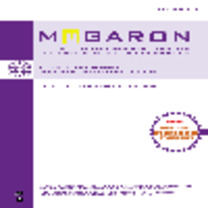Ankara'daki alışveriş caddelerinde ticari mekanlar ve sosyal sürdürülebilirlik araştırması
Social sustainability of shopping streets in Ankara
___
- Assefa, G., ve Frostell, B., (2007) Social Sustainability and Social Acceptance in Technology Assessment: A Case Study of Energy Technologies, Technology in Society, Cilt 29, Sayı 1, s. 63-78.
- Baker, R.G.V., ve Wood S., (2010) Towards Robust Development of Retail Planning Policy: Maintaining the Viability and Vitality of Main Street Shopping Precincts, Geographical Research, Cilt 48, Sayı 1, s. 65-74.
- Banerjee, T., (2001) The Future of Public Space Beyond Invented Streets and Reinvented Places, APA Journal, Cilt 67, No 1, s.9-24.
- Bayraktar, N., Tekel, A. ve Ercoşkun, Ö.Y., (2008) Ankara Atatürk Bulvarı Üzerinde Yer Alan Kentsel Donatı Elemanlarının Sınıflandırılması, Değerlendirilmesi ve Kent Kimliği İlişkisi, Gazi Üniversitesi Mühendislik-Mimarlık Dergisi, Cilt 23, Sayı 1, s. 105-18.
- Jacobs, J., (1961) The Death and Life of Great American Cities, New York, Vintage Books.
- Lynch, K., (1960) The Image of The City, Cambridge, The MIT Press.
- Nahapiet, J. ve Ghoshal S., (1998) Social Capital, Intellectual Capital and the Organizational Advantage, Academy of Management Review, Cilt 23, No 2, s. 242-66.
- Newman, P., ve Jennings, I., (2008) Cities as Sustainable Ecosystems Principles and Practices, Washington D.C., Island Press.
- Pendola, R., ve Sheldon, G., (2008) Does Main Street Promote Sense of Community? A Comparison of San Francisco Neighborhoods, Environment and Behavior, Sayı 40, 545-74.
- Rapoport, A., (1982) The Meaning of the Built Environment: A Nonverbal Communication Approach, Tuscon, The University of Arizona Press.
- Oldenburg, R., (1989) The Great Good Place: Cafes, Coffee Shops, Community Centers, Beauty Parlors, General Stores, Bars, Hangouts and How They Get Through The Day, New York, Paragon House.
- Sargın, G.A., (2009) Öncül kamusal mekanları tasarlamak: başkent Ankara üzerine kısa notlar, Mülkiye Dergisi, Sayı 241, 1923-46.
- Simms, A., Kjell, P. ve Potts, R., (2005) Clone Town Britain, London, New Economics Foundation Publications. Southworth, M., (2005) Reinventing Main Street: From Mall to Townscape Mall, Journal of Urban Design, Cilt 10, No 2, s. 151-70.
- The Report of the Brundtland Commission (1987) Our Common Future, Oxford University Press.
- Tweed, C., ve Sutherland M., (2007) Built Cultural Heritage and Sustainable Urban Development, Landscape and Urban Planning, Sayı 83, 62-9.
- Wheeler, S.M., (2004) Planning For Sustainability: Creating Livable, Equitable, And Ecological Communities, New York, Routledge.
- ISSN: 1305-5798
- Yayın Aralığı: 4
- Başlangıç: 2006
- Yayıncı: Kare Yayıncılık
Rekonstrüksiyon ya da yeniden yapma, hangi yapı için? Taksim topçu kışlası için bir değerlendirme
Uluslararası Yapım firmalarında rekabet stratejileri kavramsal kurgusunu oluşturan faktörler
TUĞÇE ERCAN, ALMULA KÖKSAL IŞIKKAYA
Ankara'daki alışveriş caddelerinde ticari mekanlar ve sosyal sürdürülebilirlik araştırması
ÖZGE YALÇINER ERCOŞKUN, Burcu ÖZÜDURU
Kişisel menzil kavramı üzerine eleştirel bir okuma ve haritalama denemesi
